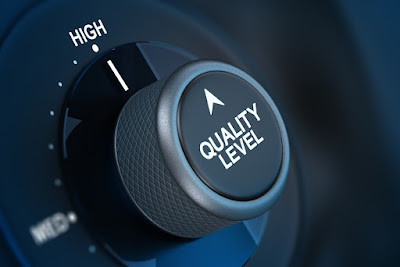When companies begin to view training measurement not just as a nice-to-have but as an actual tool for real change, its value increases many times over.
We are all familiar with the so-called smile sheets that measure only the basics of a training: the effectiveness of the facilitator and whether the training was deemed “worthwhile.” It’s nice to compile the training satisfaction ratings and, when high, make the facilitator feel good and allow the sponsor to feel that the investment in time and money was not wasted. But was it really worth it? A simple post-class evaluation sheet tells you little about whether or not the training was truly relevant, whether it will be applied on the job, and if it will make a difference in performance or business results.
Here is the process we recommend for more effective training measurement based upon our twenty years of experience in designing, delivering and proving the worth of targeted, customized training solutions:
- Know what performance change you want and the impact it will have on business results
Let’s say you want to grow your business and have decided that improving the skills level of your sales force would have the desired effect. You don’t want to simply “check the box” on training; you want to know that there has been positive behavior change and how, specifically, the training is impacting performance and business outcomes.
- Identify which key skills will have the greatest impact
Measure the current skill level, design the training to address those specific skills and then, administer a well-designed post-training measuring tool that assesses both behavior change and business impact. Measure both leading (skill adoption) and lagging (revenue) indicators.
- Set up a system for ongoing performance coaching
Train managers to coach to the specific skills that were taught in the training. Their support will ensure that the new skills are applied and actually adopted on the job. When these managers are involved in the preliminary discussions of why the training matters, they will understand how critical a role they play in achieving the business goal to be addressed.
- Set up individual development and action plans
Accurate post-training measurement can tell an individual just which skills need further development. Each employee should meet with their performance coach to review the metrics and set up a plan for development that will help them be more successful.
Well-designed training measurement can span the gap and provide the critical link between performance development goals and business goals.
At LSA Global, we all agree that training measurement is important. Our clients think business-oriented training metrics matter because they provide important information about the adoption of targeted skills, the associated impact on performance and where to focus performance coaching.
Basically, we believe that all training and training measurement should answer four key questions:
- Are people using the new knowledge, skills and processes from the training
- Are managers involved, supportive, and reinforcing the key behaviors and concepts from the training?
- Is the training making the desired performance and business impact?
- Where do people need help to continue to progress?
But, depending on your function in the organization, you might evaluate these measurements in very different ways. The HR department typically looks at training from a behavioral and performance point of view. The Finance department often looks at the training results from a financial perspective. Managers typically look at training from a “time away from getting the real work done” point of view. Participants often look at training from a career development perspective. We maintain that the more aligned these key stakeholders are in the way they design, evaluate and apply the measurement results, the more the organization as a whole will benefit.
HR knows that development, when aligned with strategy, has value beyond direct ROI in terms of employee engagement and retention. But Finance rightfully wants to see a more direct financial measure of value. HR would like Finance to understand that there are nuanced areas of organizational and employee development that are difficult to measure solely in terms of dollars. Finance would like HR to be more conversant with the quantitative financial measures which drive the business forward. Employees want the company to provide the resources they need to succeed while investing in their career development. Managers want employees with the skills to get the job done in a way that aligns with the strategy and corporate culture.
If these groups can work more closely together, instead of knocking heads, they can achieve far more. If they plan and agree together on strategic goals that are clear and implementable, there is enormous benefit to the company…the goals could actually be reached. If they can work to integrate talent management strategies and operational needs, resources will be allocated more precisely. If they can agree on the behaviors that align with strategic priorities, they can design a performance management program that promotes those behaviors. If they can put in place a more cooperative review process to see that all their functions are achieving objectives, they will be better able to coordinate on the people decisions that matter.
When the training strategy is aligned among constituents, the sky’s the limit with effectively aligned training measurement.
Training measurement scares a lot of HR and L&D professionals - too many in our opinion. We believe that training should be held to the same standards as every other important business function.
Based upon over 800 training measurement projects, we know that there are proven and effective ways to track the effect training has had on participants through changes in their behavior and on the job performance.
The problem, however, is that too many training initiatives are not aligned with or linked to the performance of the business. And if the desired outcome of the training cannot be expressed in clear and agreed upon performance or business terms, it is very difficult to measure the impact of training in a way that matters.
Here are a few examples to get the point across.
Example #1: Sales Training.
Because sales performance metrics are usually clear and agreed to, business sales training is one of the easiest training initiatives to measure effectively. Most often the business purpose of sales training is to significantly improve one of the following metrics: revenue, margin, win-rate, portfolio mix, sales cycle, DSO or customer satisfaction. The first step in any training measurement project is to identify the one or two metrics to move.
A recent client, based upon their overall company and sales strategy wanted to increase revenue by 20%. Once all stakeholders agreed to this success metric, we worked with the client to:
- Identify the critical few sales scenarios, sales skills, behaviors, attitudes, and processes most correlated to revenue growth for their unique market, strategy and culture.
- Prioritize the specific sales skills gaps for those areas.
- Design and deliver a customized experiential solution selling training program focused on closing those specific gaps.
- Provide sales performance coaching to all sales managers.
- Measure sales skill adoption and correlate it to revenue performance to answer the following questions:
(1) Are they using it?
(2) Is it making a difference?
(3) What should we coach to going forward?
Training measurement enabled the client to correlate specific sales skills and approaches to revenue performance. This allowed the client to focus their sales coaching and training efforts directly to increasing revenue.
Example #2: New Manager Training
A recent client asked us to design and deliver a new manager training curriculum for their company. This is a common request from high growth organizations where many who have been promoted based upon their technical skills as individual contributors find it difficult to effectively lead others.
We said that we would be glad to help and asked about the business drivers and objectives behind the request. After a few discussions with her and her team, we uncovered that engagement and retention of top talent was becoming an issue. They wanted to decrease attrition by 15% for their most strategic and critical roles and a group of 50 high potentials.
Based upon surveying over 500,000 employees per year with our employee engagement survey,
we know that managers can have a direct impact on four metrics:
(1) Performance
(2) Engagement
(3) Retention
(4) Employee Relations.
Once all the stakeholders agreed that employee engagement and retention mattered most, we worked with the client to:
- Measure employee engagement.
- Assess manager performance across 20 key areas directly related to managerial effectiveness.
- Prioritize the specific managerial skills gaps for those areas.
- Design and deliver a customized training program for managers focused on closing those specific gaps.
- Provide performance coaching to all Senior Managers.
- Re-measure employee engagement and managerial effectiveness.
Training measurement enabled the client to correlate specific manager skills and approaches to employee engagement and retention. This allowed the client to focus their coaching and management training efforts directly to engaging and retaining top talent.
Whenever possible, there should be substantial changes in the pre- and post-metrics of any training initiative. Would you run a business any differently?
Sometimes we get so bogged down in the details of training and training measurement that we forget what it’s all about. We need to get back to the basics of why we provide training in a business setting and why we measure its effect.
To us, the purpose of organizational training is simple: to improve performance and business results. And the purpose of training measurement is to learn and reinforce what is working to positively impact those results.
We consider that there are fundamentally four links in a chain of learning.
- First we identify and introduce the new skills we want to embed in the training group.
- Then we set up a system of ongoing performance coaching to see that the new skills and knowledge are being applied on the job.
- Thirdly we measure for actual skill application on-the-job.
- And finally we correlate skill adoption to the desired performance and business metrics to inform our next performance improvement steps.
In essence, the purpose of training is to change behaviors in order to change outcomes. After two decades working in this field we have proven over and over that well-designed training coupled with a solid support and reinforcement plan can bring about high levels of skill application on the job and, in turn, increase performance and business results.
Here are a few statistics that back up what we claim.
- Coaching matters.
We tracked thousands of participants in the same training program. Those who were effectively coached after the workshop showed 4-to-1 performance improvement compared to those who were not.
- Skill adoption (of the right skills) makes the difference.
In comparing high skill adopters to low adopters, we found that high adopters consistently outperform their peers. For example, in one organization where the company wanted to raise the average selling price, high adopters were able to raise the selling price 19% higher than low adopters within the first 6 months.
Whatever business metric you are trying to improve, you need to be smart about the training you choose to invest in. There should be a direct link from the skills you want your employees to adopt to the desired performance outcome.
Learn more at: http://lsaglobal.com/training-measurement/
When you wonder about how much of an impact your training is having on the business, why not measure it?
Simple solution…but too many mistakenly believe that training measurement for business impact is too difficult, time consuming or even impossible when all of the potential variables are considered. In fact our latest quarterly training measurement poll found that 40% of respondents did not know how to measure the impact of training and another 31% thought it was too difficult.
The good news is that skill adoption and business impact can be measured. And, when training measurement is designed and applied correctly, it is well worth the investment as an exposure, reinforcement and coaching vehicle. You, too, can track how well your training is meeting business goals by following five fundamental principles of how to do training measurement right:
- Remember it’s all about the business.
Begin with a clear view of the business goals, challenges and needs. Your training measurement effort needs to be inextricably linked to important business outcomes. So smile sheets are out except as a way to show that training has taken place and met the minimum quality standards. For example, if you intend to improve sales performance by boosting the solution and consultative selling skills of your sales team through targeted sales training and follow-on coaching, you need to measure actual on-the-job adoption of the desired sales skills and behaviors and correlate them to the sales metrics that matter most (e.g. revenue, margin, win rate, portfolio mix, deal size, or sales cycle)
- Gain the support and involvement of senior management.
Establish that business and learning objectives and success metrics are aligned with the participants, their bosses and the business as a whole. Then ensure that all three stakeholders agree on how to track progress toward those success metrics.
- Gather evidence that you are moving in the right direction.
You need to see that the training is helping to make progress toward the desired success metrics. Monitor both adoption levels and impact so you know if, after implementation, you are moving in the right direction. Then you can better identify what additional levers to pull.
- Make judicious use of data already collected.
Chances are you may not need to launch an all-out measurement project. If you can carefully select a few key performance indicators that are linked to a performance development initiative, you may have your answers already. Look for data already being used at the executive level to make business decisions.
- Keep measurement simple and meaningful.
Training measurement can be both meaningful and simple when you understand the difference between leading and lagging indicators. Think of lagging indicators as the effect. Think of leading indicators as the cause. So if you were to measure revenue as the result of sales performance in the field, it would be a lagging indicator. The leading indicators of revenue typically include sales and marketing activities in the pre-sale, sale and post-sales phases related to planning, prospecting, making introductions, analyzing needs, qualifying, positioning, articulating solutions, presenting, negotiating, closing, and follow-up.
Measure the impact of training to track and measure business results, to drive accountability for execution and to provide focused, relevant and actionable feedback for coaching.
Who should care about training measurement? Anyone who…
- Delivers, buys or participates in training.
- Wants to change on-the-job behavior.
- Wants to change on-the-job performance.
Just as you would want to ensure the quality and effectiveness of a product you sell, purchase or use, you should want to be assured that the training you are considering will fulfill its purpose. In our opinion the purpose of corporate training and development should be to improve the skills, behaviors and performance of the workforce in a way that benefits the individual, the team and the company as a whole and is fully aligned with the organization’s strategic path.
In our 25 years of experience working with high growth clients, we have found that CEOs personally approve the learning and development budget with input from others about 75% of the time. With training being approved the majority of the time at such a high level, it makes sense that training providers should be able to answer the three most common training measurement questions:
- Are people using the new skills and behaviors?
- What performance impact is it making?
- How should we target our performance coaching?
This means something that we all know but rarely discuss. Level-1 participant satisfaction measurements mean little. Executives want to know that any investment they make will have a true and measurable impact on the business. With so many investment options available to improve the business, leaders need to feel good about choosing to invest in their people this way rather than in capital improvements, technology or any of the many other priorities that demand their attention.
Before we go further, know that when we talk about “training” we include much more than the program itself. For training to be effective, you must be sure that the training targets a skill that matters, that it addresses a real business need, and that it is supported by ongoing coaching and a system of accountability and reinforcement that ensures the consistent transfer of training on the job.
With that said, the challenge as a learning and development practitioner is to ensure and prove the training has strategic value to the business. Be sure you can link the training to a meaningful business priority by:
- Identifying the specific skills that are helping and hindering business performance.
- Calculating how improvement in that skill would move an important business metric like revenue, margin, profit, employee engagement, employee retention, productivity, or customer satisfaction… whatever is most needed for the business situation.
The Bottom Line - If you want to get the attention and support of the C-Suite, then:
- Identify what matters most to your executive team and the business strategy.
- Link your training and development solution to those business metrics that matter most.
- Measure skill adoption and business impact.
- Provide targeted coaching based upon what is making the biggest difference
Finally, the business and HR Leaders are recognizing the value of measuring the training effectiveness in their organizations.
Based upon over 800 Training Measurement projects over the last two decades, we know that effective Training Measurement is a critical part of any strategic learning initiative for several important reasons:
• Adoption: It tells leaders if the new skills and knowledge are being used on-the-job.
• Impact: It determines the extent of the performance improvement and corresponding business impact.
• Targeted Coaching and Development: It provides solid data to improve learning solutions and specific areas to improve performance coaching.
When it comes to strategic learning initiatives, smart learning leaders no longer just measure participant satisfaction – Level 1 Measurement. Smart learning leaders also no longer just measure participant’s perception of knowledge gain – Level 2 Measurement. Savvy learning leaders understand that satisfaction with the content and facilitator combined with perceived knowledge gain is just a “ticket to play the game.” What really matters is the level of relevant on-the-job performance change attributed to the adopted skills and behaviors.
When training programs are correctly evaluated and measured at a deeper level, there are real payoffs:
1. The training programs get better. Companies learn what works and what doesn’t. Leaders learn what participants take away and what gets left behind. Then they can either tweak the pre-work, design, delivery format or reinforcement tools and processes to see that the critical performance and learning objectives are met.
2. The impact on business can be identified and reinforced. Companies no longer have to rely on anecdotal evidence that learning investments are making a real difference compared to other performance improvement options; they can point to real numbers. When the learning is tied to business goals, training measurement can show what role the training played in performance improvement and goal achievement.
3. Executives are more apt to support learning when they see how it fits into their overall business strategy and organizational culture. Sometimes there is a direct link. For example, a recent client had a 27% increase in speed to quota for new sales reps in EMEA. Other times there is an indirect link, and it becomes a matter of showing how relevant management training supports employee engagement and then how engagement supports the organization’s financial health and future growth. Other times, we need to dig deeper to link the adoption of new skills and behaviors to a change initiative like how raising the level of management skills affects retention
4. The value of training is more visible across the board. Leaders that can show the real business value of targeted training gain the support not only of the executive team but also of mid-level managers and employees who must invest the time and effort to make the skills stick. Training becomes more than a nice-to-have; it becomes a strategic talent management tool that is central to the continuous improvement and learning of the company’s workforce.







